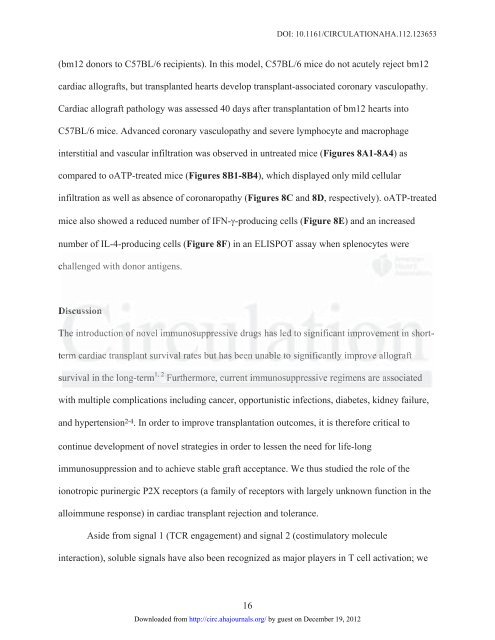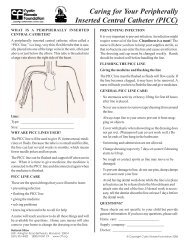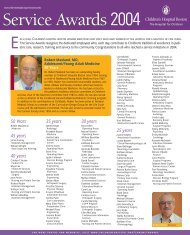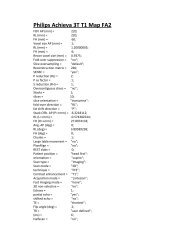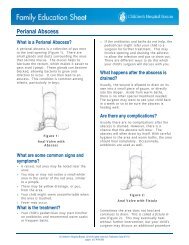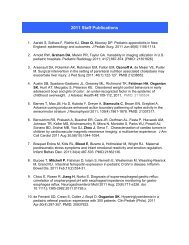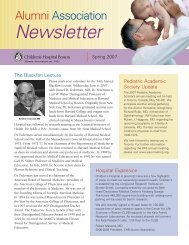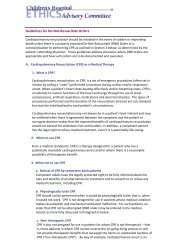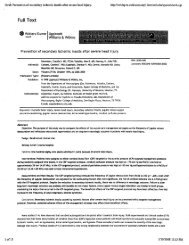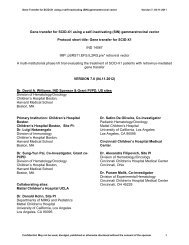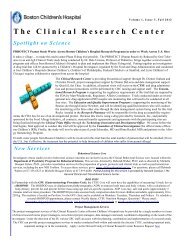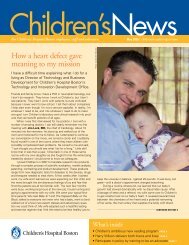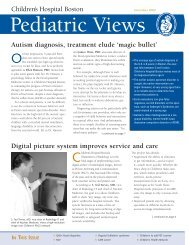Abdi, Camillo Ricordi, Mohamed H. Sayegh, Antonello Pileggi and ...
Abdi, Camillo Ricordi, Mohamed H. Sayegh, Antonello Pileggi and ...
Abdi, Camillo Ricordi, Mohamed H. Sayegh, Antonello Pileggi and ...
You also want an ePaper? Increase the reach of your titles
YUMPU automatically turns print PDFs into web optimized ePapers that Google loves.
16<br />
DOI: 10.1161/CIRCULATIONAHA.112.123653<br />
(bm12 donors to C57BL/6 recipients). In this model, C57BL/6 mice do not acutely reject bm12<br />
cardiac allografts, but transplanted hearts develop transplant-associated coronary vasculopathy.<br />
Cardiac allograft pathology was assessed 40 days after transplantation of bm12 hearts into<br />
C57BL/6 mice. Advanced coronary vasculopathy <strong>and</strong> severe lymphocyte <strong>and</strong> macrophage<br />
interstitial <strong>and</strong> vascular infiltration was observed in untreated mice (Figures 8A1-8A4) as<br />
compared to oATP-treated mice (Figures 8B1-8B4), which displayed only mild cellular<br />
infiltration as well as absence of coronaropathy (Figures 8C <strong>and</strong> 8D, respectively). oATP-treated<br />
mice also showed a reduced number of IFN--producing cells (Figure 8E) <strong>and</strong> an increased<br />
number of IL-4-producing cells (Figure 8F) in an ELISPOT assay when splenocytes were<br />
challenged with donor antigens.<br />
Discussion Di Disc sc scus us ussi sion ion<br />
The e introduction in i troduction on of no nove novel vel im immu immunosuppressive muno nosu su supp ppressive drug drugs ug ugs has<br />
as led<br />
ed to<br />
o signif significant ific icant t im impr improvement prov ovem emen ent in sho shorthort- termerm rm car cardiac ar ardi di diac ac tra transplant ranspl pl plan ant su surv survival r iv ival al rat rates at ates es but<br />
ut has<br />
s been be been en unable una nabl bl ble to sig significantly ig ignifi fi fica ca c nt ntly ly imp improve mp mpro ro rove ve allograft all llog ogra ra raft ft<br />
survival in the long-term 1, 2 urvival in th the e lo long ng ng-t -t -ter er erm Furthermore, current immunosuppressive regimens are associated<br />
1, 2 Fur ur u th ther er e mo m re re, , cu curr rren en ent t im immu mu m no nosu su supp pp ppres es e sive ve reg eg egim im imen ens s ar are e as associated<br />
with multiple complications including cancer, opportunistic infections, diabetes, kidney failure,<br />
<strong>and</strong> hypertension 2-4 . In order to improve transplantation outcomes, it is therefore critical to<br />
continue development of novel strategies in order to lessen the need for life-long<br />
immunosuppression <strong>and</strong> to achieve stable graft acceptance. We thus studied the role of the<br />
ionotropic purinergic P2X receptors (a family of receptors with largely unknown function in the<br />
alloimmune response) in cardiac transplant rejection <strong>and</strong> tolerance.<br />
Aside from signal 1 (TCR engagement) <strong>and</strong> signal 2 (costimulatory molecule<br />
interaction), soluble signals have also been recognized as major players in T cell activation; we<br />
Downloaded from<br />
http://circ.ahajournals.org/ by guest on December 19, 2012


